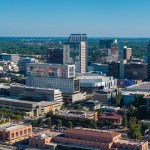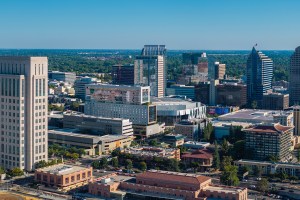Spring Off to Record Start, Some Clouds Appear
Despite a slight softening, the multifamily industry continues its record-setting performance.
Report highlights:
- The national average asking rent rose 14.8% on a year-over-year basis, to an all-time high of $1,642; rents rose 2.1%, or $34 on a T3 basis, marking a record growth for a first quarter.
- Inflation and the war in Ukraine act as headwinds for the multifamily market and will influence the pace of growth.
- Renter-by-Necessity and Lifestyle segments reach equilibrium in short-term rent growth.
- The single-family rental sector posted solid rent performance, with the year-over-year average dropping 80 basis points to 14.1%.
Spring Seasonal Growth Begins With a Slight Moderation in Rent Growth, Still Marks a New Record
The U.S. multifamily market posted healthy performance, with the average asking rent up $14 to $1,642 in March. This represents a 14.8% year-over-year increase, but 50 basis points below February—at the start of the spring seasonal growth, the first signs of softening appear in some markets. Global events and economic conditions support the expectations of a slowdown. Still, during the first quarter, rents rose $34, or 2.1%, more than in any prior first quarter; since March 2021, national asking rents appreciated by $212.
Demand remains healthy, supported by young workers, but household formation is likely to moderate in 2022. Official numbers have not been released yet but estimates report that some two million households formed in 2021, while absorption stood at 500,000. This year’s households and absorption predictions drop to about half those figures, which is closer to ‘normal’ levels.
Miami continued to outperform all other major metros, and rent growth was up 26.3% year-over-year in March, followed by Orlando, Tampa, Las Vegas and Phoenix. Of the top 30 metros, these five posted asking rent increases of 23% or more, 87% of markets had rents rise by 10% or more, and just three below 10.0% in growth: San Francisco (8.7%), Kansas City (8.1%) and the Twin Cities (5.1%).
The decrease in occupancy rate in some Sun Belt and West markets signals that demand has not kept pace with new supply and might be cooling off—Phoenix (-0.5%), the Inland Empire and Las Vegas (both -0.4%) and Sacramento (-0.3%).
Demand Even Across Property Segments; Tech Hub Markets Take Lead
The national average asking rent increased 0.9% month-over-month in March, or $14, 30 basis points above the January and February rate. The increase was slightly lower than 2021, when rents rose $18.
Tech hubs San Jose (2.1%) and Seattle (1.8%) took the lead, followed by Chicago (1.6%) and Dallas (1.1%). Atlanta (0.1%) and Baltimore (-0.6%) ranked lowest.
State of Economy and Global Events Cast Shadows on Fundamentals
While the multifamily market posts healthy fundamentals, above-trend inflation, rising interest rates and the war in Ukraine raise concerns. The Federal Reserve is trying to keep inflation under control by increasing the interest rate—the 10-year U.S. Treasury rate yielded 2.4% in late March, which is the highest it’s been in the last three years and will likely continue to grow. This comes at a time when multifamily acquisition yields are at all-time lows—averaging 4.5% and lowering to the 3% range for assets in prime locations or with high revenue streams—which can complicate transactions and refinancings.
Typically, properties purchased at low cap rates need to raise rents considerably to reach yield targets if the 10-year Treasury rate climbs above 3%, according to Ken Rosen, professor emeritus at the University of California, Berkeley, and chairman of real estate research firm Rosen Consulting, who at the Pension Real Estate Association 2022 Spring Conference said “I worry that (real estate professionals) forgot what it’s like in a normalized cap rate environment.”
Demand Pushes Forward the Single-Family Build-to-Rent Segment
The asking rent for the single-family rental segment rose 14.1% year-over-year through March, 80 basis points below the February rate. In seven metros, the average asking rent increased by 20% or more, led by Orlando (51.8%), Miami (35.1%), Toledo (25.3%) and Tampa (23.3%). Occupancy inched up 0.1% nationally year-over-year, and the construction pipeline is robust.
National Rental Home Council and John Burns Real Estate Consulting data shows that BTR homes accounted for 26% of properties added to the SFR sector in the final quarter of 2021, an impressive jump from 3% in the third quarter of 2019.
Read the full Matrix Multifamily National Report-March 2022











Add Comment